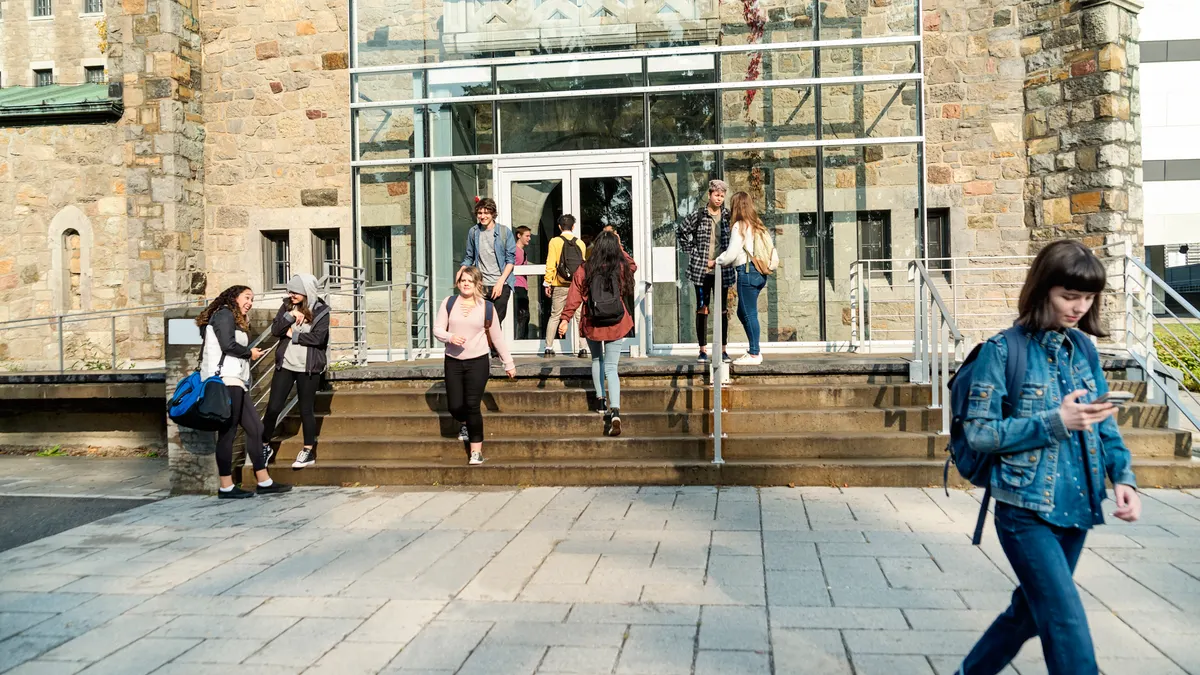A new study from the American Academy of Arts and Sciences (AAAS) finds the United States trailing other developed nations throughout the world in the number of citizens with fluency in multiple languages. Of the 20% of American citizens who can speak at least two languages, only half can speak both at advanced levels, and more than 50% of those speakers are foreign-born.
The study is a preliminary report for a February 2017 release that will examine ways the United States can incorporate more foreign language exposure to support national imperatives in business and cultural competency. Some observers expect colleges and universities to play a major role in developing these areas, despite the dwindling lack of resources and opportunities for students to study foreign language in primary and secondary schools.
Martha Abbott, Executive Director of the American Council on the Teaching of Foreign Languages (ACTFL), says colleges and universities might have a harder time building fluency within beginner or intermediate foreign language students, but that it is an essential component for human developing and preserving national interests.
“There’s been a fundamental change, and our enrollments and languages have not kept up with that change at neither post-secondary nor K-12 levels,” says Abbott, who in September was appointed by President Barack Obama to the National Security Education Board, which advises the leadership of the National Security Education Program. “If students take it seriously when they enter college, one way schools can help is by allowing students the room to take foreign language, even if they are majoring in other areas where it may not be required, and also promoting study abroad so students have experiences in different cultures.”
Abbott says that language not only builds communication capacity, but also creates a global view of where business actually takes place.
“It’s an important skill for today’s students to have, to interact with others around the world. That’s so important in the business world, because business often doesn’t get done at the table, but in social settings. It’s hard to quantify opportunities missed because of language barriers.”
Those barriers are causing some universities to reconsider approaches to foreign language requirements. An academic task force at Princeton University is considering mandatory foreign language study for all undergraduates for at least one semester, which would replace its current standard which allows students to fulfill requirements with SAT language proficiency, amassed advanced placement credits from high school, or by testing out of the undergraduate curriculum.
Other universities are taking more aggressive efforts to make language a bigger element of postsecondary training. At the University of Notre Dame, officials are moving towards language proficiency testing which matches federal diplomacy standards for fluency.
“We’re less interested in three semesters you pass, but what you can do with this in the workplace, in diplomacy and international business,” says Brian O’ Conchubhair, an associate professor in Notre Dame’s Department of Irish Language and Literature.
He says the emphasis on language proficiency is paired with a focus on encouraging students to study abroad, and academic collaboration between foreign language and finance. The institution offers a unique degree in international economics, in which graduates complete coursework in economics along with advanced training in Arabic, Chinese, French, German, Italian, Japanese, Russian or Spanish.
But even with institutional efforts to build language training and exposure, some students lack the interest or skill to take advantage of higher education language immersion. At Princeton, the student editorial board wrote in a recent edition of the Daily Princetonian its opposition to the foreign language proposals, for its less-than-useful impact on student academic scheduling.
“Between the existing 10 distribution requirements and the many required classes for concentrations and certificates, students have very little room left in their academic program to explore new interests. The Board believes that mandating that at least one of these few electives be a language course imposes a high marginal cost on all students.”
O’Chubhair says that in many cases, students who are not exposed to foreign language in primary or secondary schools face a tougher road to fluency, but that it can be done if institutions foster a culture of immersion and value in the coursework. At Notre Dame, language departments incorporate social events, outside tutoring and training both online and in-person, in an effort to meet the Modern Language Association’s estimate of the more than 1,000 hours necessary to learn a new language.
“So if you take three or four hours per week, that’s a counterproductive way of looking at proficiency,” says O’Chubhair. “Students who understand the value of languages are committed, because they are in small classes and have personal relationships with their instructors. But those who have a bad experience or no experience at all, and are inhibited by the idea of grammar, prepositions and things like that;. it’s hard to get those kids to experience the wider world that language has to offer.”

















